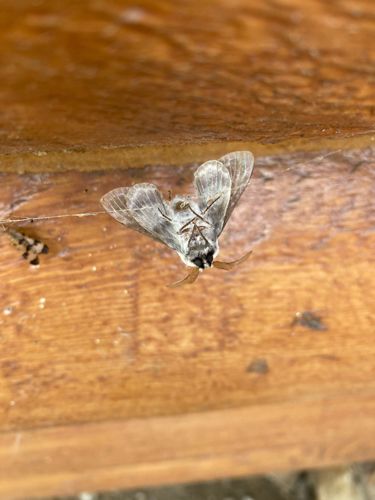Moth
Scientific Name: Unknown (likely family Arctiinae or a similar 'fluffy' moth family)
Order & Family: Lepidoptera (Order), Arctiinae (Family - subfam. of Erebidae) or similar
Size: Typically small to medium-sized; body length 1-3 cm, wingspan 2-6 cm.

Natural Habitat
Widely varied, depending on the specific species. Often found in forests, woodlands, gardens, and human-modified environments, sometimes attracted to lights at night.
Diet & Feeding
Adult moths often do not feed or feed on nectar/honeydew. Larvae (caterpillars) are typically herbivorous, feeding on leaves of various plants.
Behavior Patterns
Nocturnal activity is common for many moths, including this type. They are often attracted to artificial lights. The posture in the image, with wings held in a 'tent-like' fashion over the body, is characteristic of many moths when at rest. Some moths use camouflage to blend with their surroundings. The image potentially shows a moth in a spiderweb, indicating it may have been caught or died there.
Risks & Benefits
Moths are important pollinators for many plants. Larval stages (caterpillars) can sometimes be pests to crops or stored products, depending on the species. Adult moths are generally harmless to humans, though some larvae can cause skin irritation upon contact (e.g., tussock moth caterpillars). They serve as a food source for other animals like birds and bats.
Identified on: 9/28/2025